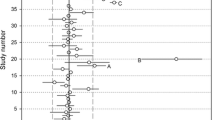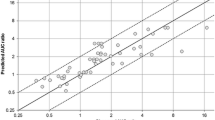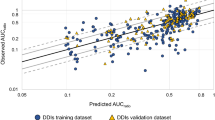Abstract
Objective: Drug biotransformation and interactions are a major source of variability in the response to drugs. The superfamily of cytochromes P450 plays a key role in this phenomenon but, because of the complexity of interactions between drugs and isozymes, it becomes more and more difficult for clinicians to master the knowledge required to predict the occurrence of such drug interactions. To predict and help manage the occurrence of cytochrome P450-dependent interactions, we developed an original computer application: Q-DIPS (quantitative drug interactions prediction system).
Methods: A multidisciplinary work team was created, associating clinical pharmacologists, pharmacists and a computer scientist. Major steps of investigation were: (1) the creation of a database to collect qualitative and quantitative data describing substrates, inhibitors and inducers of specific cytochrome P450 isozymes, with quality assessments; (2) the development of multi-access to these data and (3) their incorporation into extrapolation systems allowing the prediction of in vivo drug interactions on the basis of in vitro data. As an example, prediction and validation studies of CYP3A4 inhibition by ketoconazole and fluconazole will be discussed.
Results: Q-DIPS gives up-to-date information, in dynamic tables, describing which specific P450 isozymes metabolise a given drug, as well as which drugs may inhibit or induce a given isozyme. To better answer common clinical questions and help to rapidly evaluate the risk of interactions, it is possible to obtain an overview of substances causing interactions with a specific drug or to focus on drugs taken by a patient (“clinical case”). For each question, key references, relevant quantitative data and quality indices are easily accessible. Two modules allowing input with commercial names and the anatomical therapeutic chemical classification were also included. On the basis of enzymatic and pharmacokinetic data generated in vitro or collected in vivo, the extrapolation module integrates quantitative models to predict the impact of a treatment on enzymatic activities. The simplest model predicted a strong but fluctuating inhibition of CYP3A4 by ketoconazole, whereas the impact of fluconazole was lower. Validations with published in vivo data suggested an appropriate prediction of the risk.
Conclusion: The current Q-DIPS prototype shows promising potential for helping to improve the management of drug interactions involving metabolism. Validation of extrapolation techniques need to be completed, in view of including important factors such as intrahepatocyte drug accumulation, contribution of metabolites to inhibition as well as in vitro non-specific binding to microsomal proteins. The final goal will be to help select the most judicious clinical studies to be performed so as to avoid useless, expensive and unethical investigations in man.
Similar content being viewed by others
Author information
Authors and Affiliations
Additional information
Received: 9 November 1998 / Accepted in revised form: 2 March 1999
Rights and permissions
About this article
Cite this article
Bonnabry, P., Sievering, J., Leemann, T. et al. Quantitative drug interactions prediction system (Q-DIPS): a computer-based prediction and management support system for drug metabolism interactions. E J Clin Pharmacol 55, 341–347 (1999). https://doi.org/10.1007/s002280050638
Issue Date:
DOI: https://doi.org/10.1007/s002280050638




